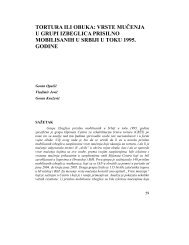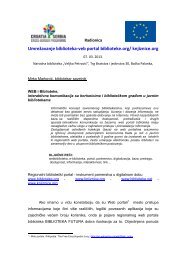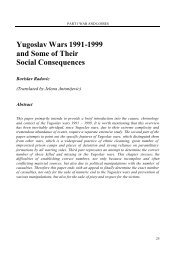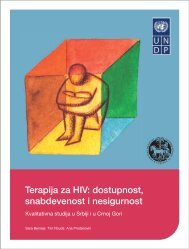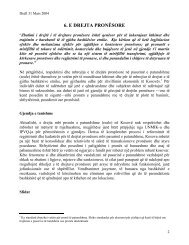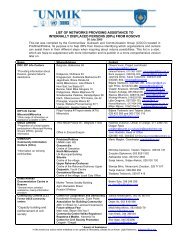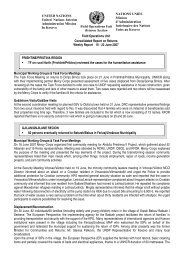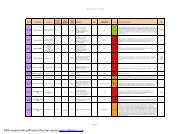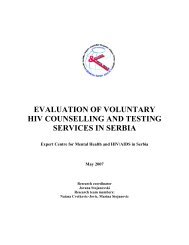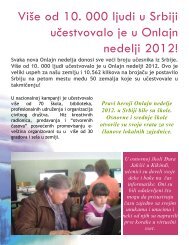Download book (PDF file 742 kB) - IAN-a
Download book (PDF file 742 kB) - IAN-a
Download book (PDF file 742 kB) - IAN-a
You also want an ePaper? Increase the reach of your titles
YUMPU automatically turns print PDFs into web optimized ePapers that Google loves.
A. Living Conditions and financial status of IDPs from the<br />
Prizren area: two years later<br />
Compared to the period two years ago, living conditions and<br />
financial status of the PrIDPs are not better at all:<br />
Most of the examinees are currently privately accommodated in<br />
rented flats (58,6%) just as it was the case in the year 2000<br />
(64,8%), and a far smaller percentage is accommodated with<br />
relatives or friends (21%; 2000-sample: 21,8%). Among the<br />
examined PrIDPs 12 % live in refugee camps (2000-sample:<br />
4,1%), 7,7% of them own a house or a flat (2000-sample:<br />
8,5%), and 3 examinees (0,8%) did not give data on the type<br />
of their accommodation (2000-sample: 0,7%).<br />
When the data from only those examinees who gave<br />
information on their employment are considered (95,1% in<br />
each sample), the unemployment rate estimated on the basis<br />
of the 2000-sample was 79,1%, while in the 2002-sample<br />
there are 84,1% unemployed (Sample /2000-2002/ by<br />
Employment /yes-no/: Chi square = 4.78, df =1, p < 0.05).<br />
This data is even more important in the view of the fact that a<br />
relatively higher percentage of the PrIDPs from the 2002-<br />
sample considers himself/herself able to work (68,3%) than it<br />
was the case with the examinees from the 2000-sample<br />
(56,9%). The percentage of the unemployed within the PrIDP<br />
population is much higher than the unemployment rate in the<br />
general population of Serbia (about 20% to 30%) or in the<br />
populations of the internally displaced persons in other<br />
countries (for example in IDP population in Georgia there are<br />
about 40% unemployed, while the unemployment rate in the<br />
general population is, similarly as in Serbia, around 20%;<br />
according to Dershem & Gurgenidze, 2002).<br />
The average monthly income per family member of those<br />
stating the data in the 2000-sample (58,5% of them) was<br />
13,54 EUR (Standard deviation=11,54). In the 2002-sample<br />
the average monthly income per family member of the PrIDPs<br />
stating the data (87,7% of them) amounts to 40,58 EUR<br />
(Standard deviation=26,65). It is obvious that the average<br />
nominal monthly income has grown (Average monthly income<br />
by sample: F (1;1298) =652,50, p< 0.0001). However, the real<br />
costs of living in Serbia have increased, and therefore it can be<br />
concluded that the financial situation of the PrIDPs is not at all<br />
better than it was two years ago;<br />
Very small change for better has occurred regarding the<br />
dependence on humanitarian aid: while in the 2000-sample,<br />
only 0.6% of the examinees gave a negative answer to the<br />
question "do you consider the humanitarian aid needed", in the<br />
14



